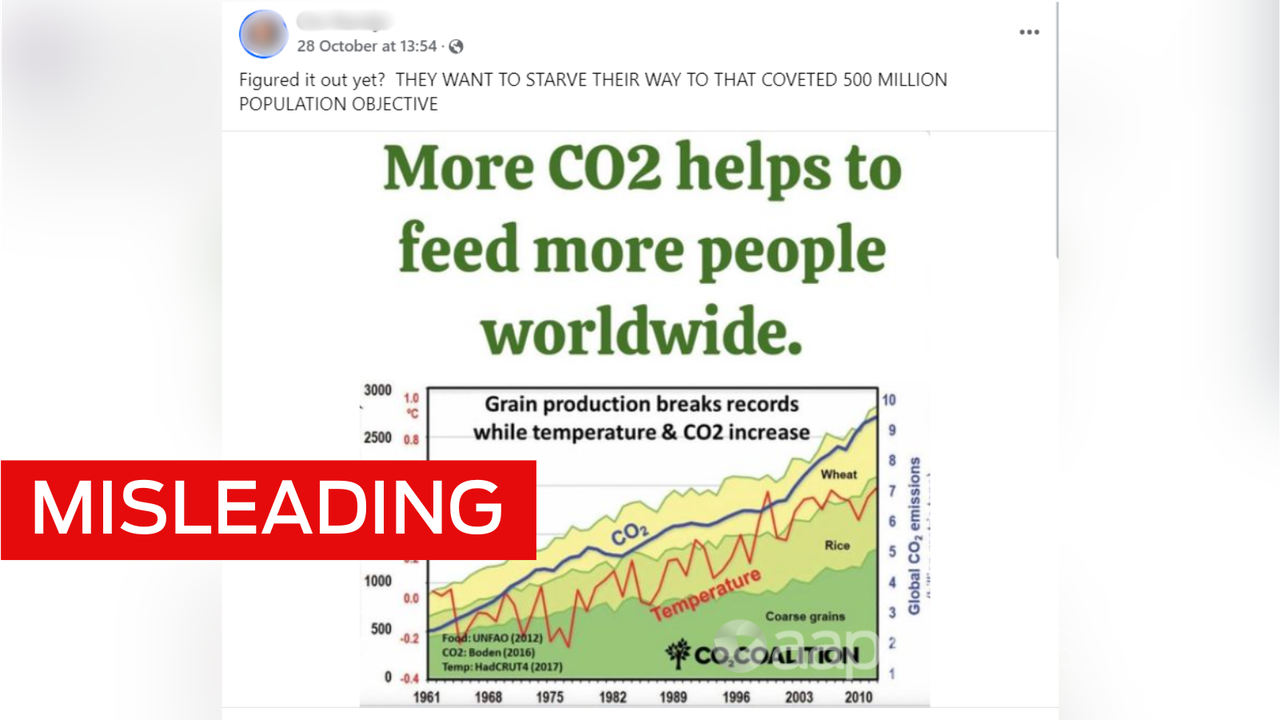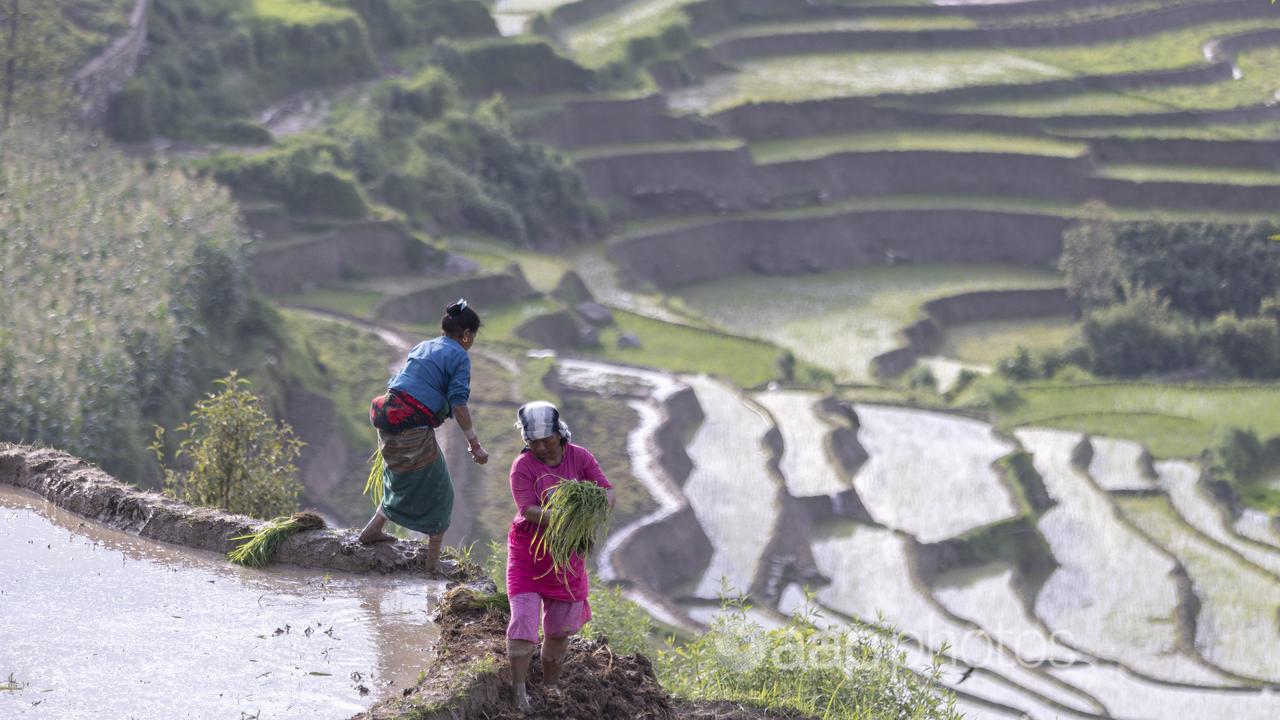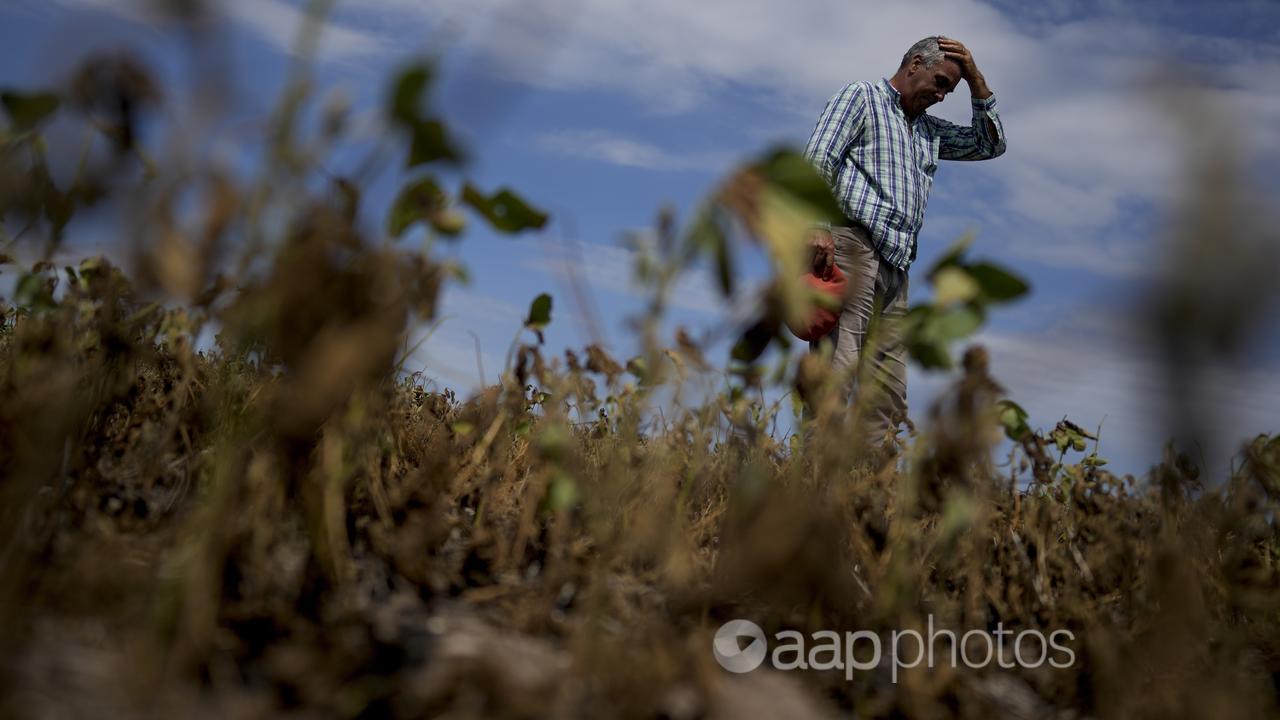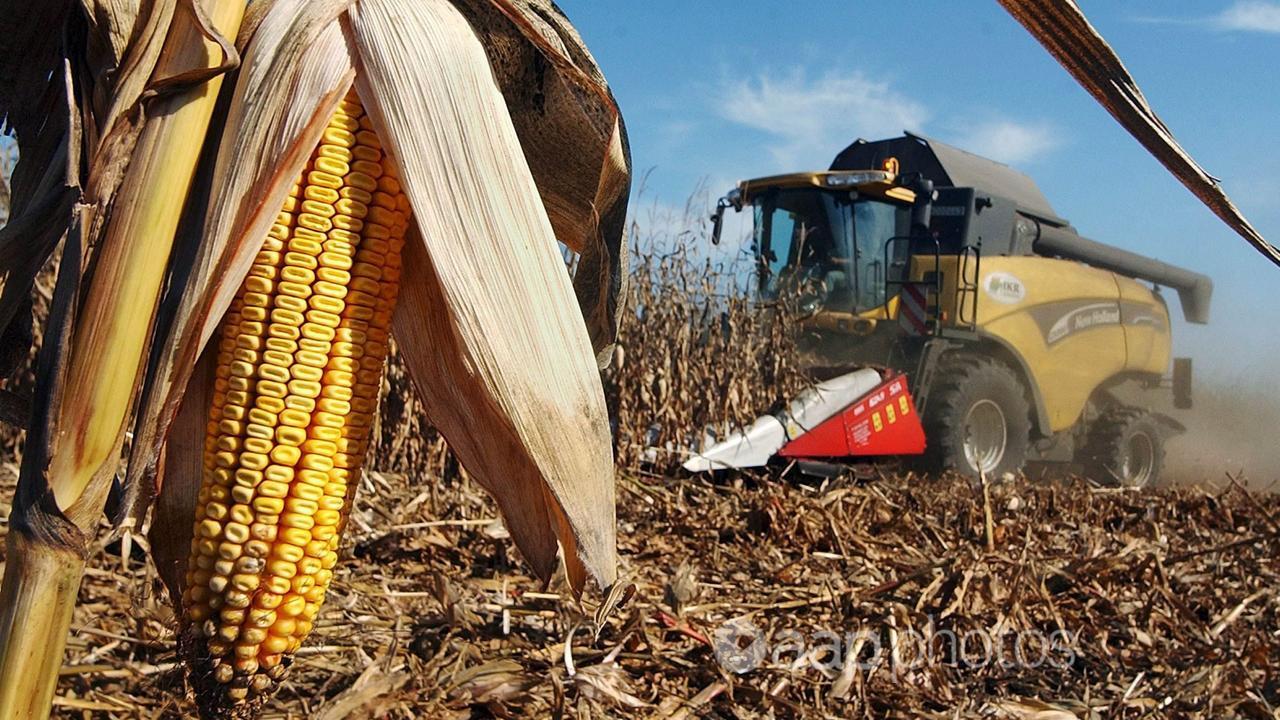AAP FACTCHECK – An increase in atmospheric CO2 and global temperatures is not behind the huge increase in global crop production across the last 60 years, despite claims on social media.
Experts say that any benefit to crop growth provided by an increase in CO2 is generally offset by the damage caused by the resulting rise in temperature.
Instead, they say, increased farmland and non-climate factors such as seed varieties, fertilizers, pesticides and improved farming practices are responsible for increased crop production.
The claim is made in a graph produced by the US climate-sceptic group CO2 Coalition and widely shared on Facebook.
Headlined “More CO2 helps to feed more people worldwide”, it charts temperature and atmospheric CO2 increases since 1961 along with an increase in the production of three crops: wheat, rice and coarse grains.

“Grain production breaks records while temperature & CO2 increase,” a title on the graph reads.
The graph is correct in that atmospheric CO2, global temperatures and grain production have all increased since 1961.
UN data shows the increase in production is due to increased land use and also far superior crop yield.
Experts told AAP FactCheck the graph is a case of correlation not equalling causation.
Increased atmospheric CO2 is beneficial for some crops in certain climates as it increases the rate of photosynthesis, promoting faster growth (the “carbon fertilisation” effect).
It can also improve how efficiently crops use water.
However, multiple studies have found that, generally, any benefit from elevated CO2 is offset by damage caused by the resulting increase in temperature due to the greenhouse effect.

The 2019 Intergovernmental Panel on Climate Change (IPCC) Special Report on Climate Change and Land looked at global research and concluded climate change is increasingly detrimental to crop productivity.
It pointed to a 2018 Japanese study that assessed global crop production between 1981 and 2010, finding global average yields of maize, wheat and soybean were down 4.1, 1.8 and 4.5 per cent respectively, even when taking into account agricultural advancements and the benefits of increased CO2.
A 2017 study, which looked into the impact of climate change in the Middle East and northern Africa, found a “significant correlation” between decreasing crop yields and increasing temperatures, regardless of whether the CO2 fertilisation or adaptation measures were taken into account.
There have been similar findings for a reduction in yields in India, wheat production in Britain and crop yields in Hungary.
However, the IPCC report also notes there are some locations where crops have benefited, e.g. rice yield increases in north-eastern China.
Richard Ellis, a crop production expert at the University of Reading, told AAP FactCheck the combined effects of elevated CO2 and increased temperature depend on location.
“If you were in northern Canada, at the northern limit for wheat production … increase in CO2 and associated rise in global temperature will improve grain production,” Professor Ellis said.
“But most of the world’s population is not there. And neither are most of the world’s farmers.
“I am far more worried about the negative effects of increased temperature (and water supply problems) on grain yields than I have positive thoughts about CO2 benefits.”

Professor Bhagirath Chauhan, from the Centre for Crop Science at the University of Queensland, said other consequences of climate change, including water shortages and extreme weather events, could offset any benefits of elevated CO2.
The 2019 IPCC report concludes, with high confidence, that climate change “will increasingly be detrimental to crop productivity as levels of warming progress”, noting effects will vary depending on CO2 concentrations, fertility levels and region.
Prof Ellis said there were several reasons for the increase in yields over the last 60 years, including the “Green Revolution“, in which newer agricultural methods and higher-yielding crop varieties and technologies were introduced to many developing countries in the 1960s.
UN Food and Agriculture Organization data (p30) from 2003 estimated that between 1960 and 2000, the Green Revolution resulted in increased yields per hectare of 208 per cent for wheat, 109 per cent for rice and 157 per cent for maize across developing countries.

Data scientist Hannah Ritchie looked into increased yields and the impact of climate change as part of a series for Our World in Data.
She used UN data to show that from 1961 to 2022, global yields of wheat, rice, maize and soybean were up 239, 152, 194 and 131 per cent respectively.
Given studies show the combined impact of increased CO2 and temperature either cancel each other out or slightly reduce yield, she concluded the increases over recent decades were despite, not because of, the effects of climate change.
By comparing against the aforementioned 2018 Japanese study, Dr Ritchie also estimated climate change had likely reduced the yield of maize by 0.2 tonnes per hectare and soybean by 0.1 tonnes per hectare, with marginal effects on wheat and rice.
“Climate change has been a drag on yield increases, but this has not been enough to stop them from growing,” she noted.
“Advances in crop breeding, the development of better seeds, and access to agricultural inputs have vastly outpaced the impact of climate.”
The Verdict
Misleading – The claim is accurate in parts but information has also been presented incorrectly, out of context or omitted.
AAP FactCheck is an accredited member of the International Fact-Checking Network. To keep up with our latest fact checks, follow us on Facebook, Twitter and Instagram.
All information, text and images included on the AAP Websites is for personal use only and may not be re-written, copied, re-sold or re-distributed, framed, linked, shared onto social media or otherwise used whether for compensation of any kind or not, unless you have the prior written permission of AAP. For more information, please refer to our standard terms and conditions.

















